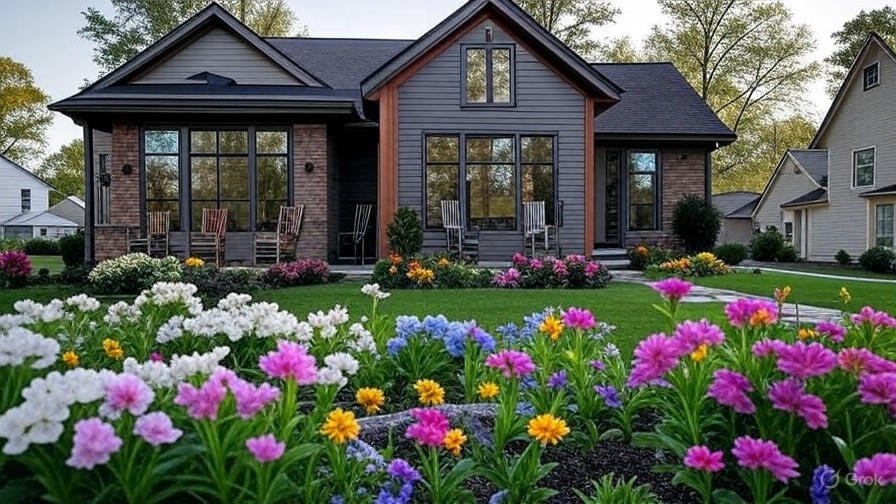As pet ownership continues to rise, with over 70% of U.S. households owning a pet , homeowners are increasingly seeking ways to harmonize their love for animals with a stylish, functional living space. The challenge lies in creating interiors that withstand the wear and tear of pets while maintaining an aesthetic appeal. This year, designers and brands are stepping up with innovative solutions that prioritize durability without sacrificing style. From scratch-resistant fabrics to pet-safe decor, here’s how to craft a home that’s both pet-friendly and chic.
The Rise of Pet-Centric Home Design
In 2025, the interior design industry is witnessing a surge in pet-centric products, driven by demand for spaces that cater to both human and animal needs. “Pets are family, and people want their homes to reflect that,” says Sarah Thompson, a Seattle-based interior designer specializing in pet-friendly spaces. “The market is responding with materials and designs that are tough enough for claws and paws but elegant enough for modern homes.” For those looking to overhaul their spaces, companies like whole house customization china offer tailored solutions to integrate pet-friendly features seamlessly.
This trend is backed by data: a recent survey by Houzz found that 40% of homeowners renovating their homes in 2024 considered pet needs in their design choices, up from 25% five years ago. The focus is on creating environments where pets can thrive without compromising the home’s visual appeal or functionality.
Choosing Durable Materials
When designing a pet-friendly home, material selection is critical. Pets, especially dogs and cats, can be tough on surfaces, from scratching furniture to tracking dirt. Fortunately, advancements in textiles and finishes are making it easier to maintain a polished look.
Fabrics That Stand the Test of Time
High-performance fabrics like Crypton and Sunbrella are gaining popularity for their resistance to stains, odors, and scratches. These textiles are tightly woven, making it difficult for pet hair to embed, and they’re easy to clean with just soap and water. “Crypton is a game-changer,” says Thompson. “It’s soft and luxurious but practically indestructible.” For pet owners on a budget, microfiber is another excellent option, offering similar durability at a lower price point.
Leather, surprisingly, can also be pet-friendly if treated properly. Full-grain leather with a protective finish resists scratches and wipes clean easily, though it requires regular maintenance to prevent cracking. Avoid delicate fabrics like silk or linen, which are prone to snags and stains.
Flooring That Forgives
Flooring is another area where durability meets style. Hardwood floors, while beautiful, can scratch easily under pet nails. Instead, designers recommend luxury vinyl planks or tiles, which mimic wood or stone but are water-resistant and scratch-proof. Porcelain tiles are another strong contender, offering a sleek look that’s impervious to spills and accidents.
For those who prefer carpeting, stain-resistant options like nylon or triexta are ideal. These materials repel liquids and are easy to clean, making them suitable for homes with pets prone to accidents. Adding a low-pile rug in high-traffic areas can further protect floors while adding warmth to the space.
Pet-Safe Furniture and Layouts
Furniture in a pet-friendly home needs to be both functional and resilient. Rounded edges on tables and chairs prevent injuries to rambunctious pets, while sturdy frames withstand jumping or climbing. Modular furniture, which can be reconfigured or replaced in sections, is a smart choice for homes with active animals.
Pet beds and crates are also being integrated into home decor. Brands like West Elm and Pottery Barn now offer stylish pet beds that blend seamlessly with modern furniture. Built-in pet nooks, such as under-stair cubbies or window-side benches, are another trend, providing pets with their own space without cluttering the room.
Layout matters too. Open floor plans allow pets to move freely while keeping them in sight, reducing the likelihood of destructive behavior. Designating a “pet zone” with easy-to-clean surfaces and toys can help contain messes, especially in homes with multiple animals.
Stylish Accessories That Work for Pets
Accessories can elevate a pet-friendly home while serving practical purposes. Wall art made from durable materials like metal or acrylic withstands curious paws better than fragile canvas prints. Washable throw blankets and pillows add coziness and protect furniture from hair and dirt.
Pet toys and feeding stations are also getting a design upgrade. Sleek ceramic bowls and elevated feeders not only look sophisticated but also promote better posture for pets during meals. Toy storage solutions, such as woven baskets or custom cabinets, keep clutter at bay while complementing the home’s aesthetic.
Keeping Safety First
While style and durability are important, safety is paramount. Toxic plants like lilies and sago palms should be avoided, as they can harm pets if ingested. The ASPCA’s list of pet-safe plants, including spider plants and Boston ferns, is a helpful resource for pet owners looking to add greenery.
Cords and small objects pose additional risks. Cord organizers and pet-proof storage can prevent chewing or swallowing hazards. For homes with cats, secure shelving is essential to avoid toppling during playful climbs.
Sustainability in Pet-Friendly Design
Sustainability is another key consideration in 2025’s pet-friendly design landscape. Eco-conscious brands are producing pet products from recycled or biodegradable materials, such as hemp-based pet beds or toys made from reclaimed wood. These options appeal to environmentally aware pet owners who want to reduce their carbon pawprint.
“Sustainable design isn’t just about the planet—it’s about longevity,” says Mark Rivera, a Los Angeles-based designer. “Choosing high-quality, durable materials means less frequent replacements, which is better for both the environment and your wallet.”
Real-Life Inspiration
Homeowners are putting these ideas into practice with stunning results. In Chicago, the Larson family transformed their living room into a pet-friendly haven by swapping out their old sofa for a Crypton-upholstered sectional and installing porcelain tile flooring. “Our dog, Max, loves to play rough, but our new setup looks as good as the day we bought it,” says homeowner Jenna Larson.
In Austin, designer Maria Gonzalez created a custom pet nook for a client’s two cats, complete with a washable cushion and built-in scratching post. “It’s their favorite spot, and it keeps them off the furniture,” Gonzalez notes. These examples show that pet-friendly design can be both practical and beautiful.
Looking Ahead
As the bond between pets and their owners deepens, the demand for pet-friendly interior design will only grow. Innovations in materials, furniture, and accessories are making it easier than ever to create homes that are safe, durable, and stylish. Whether you’re a new pet owner or a seasoned one, these ideas can help you craft a space where both you and your furry friends feel at home.
For those ready to start, experts recommend beginning with small changes, like swapping out a rug or investing in a high-performance sofa. With the right choices, your home can be a sanctuary for everyone—pets included.










